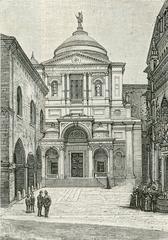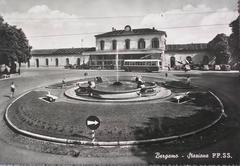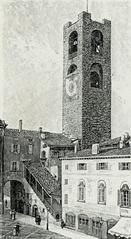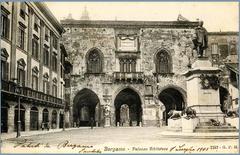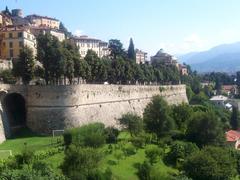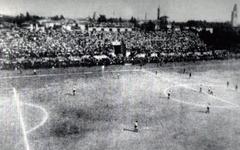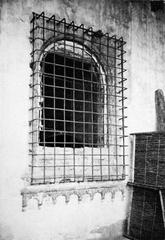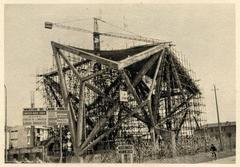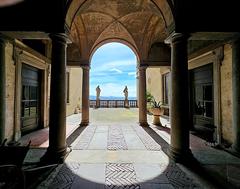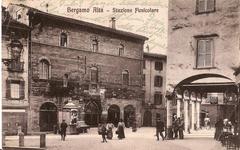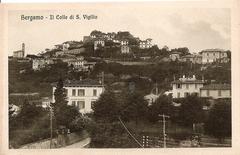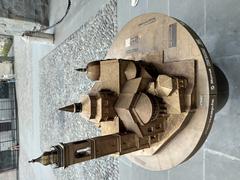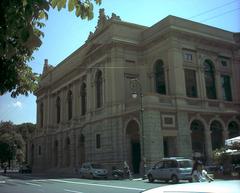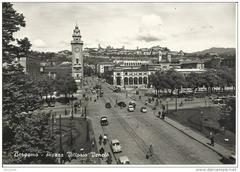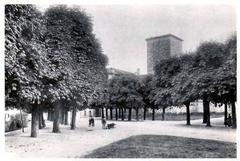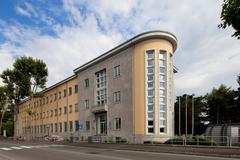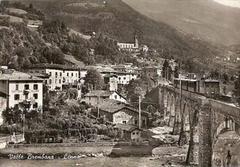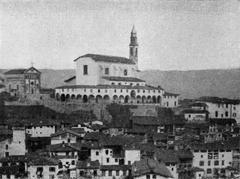
Castello di San Vigilio Visiting Hours, Tickets, and Bergamo Historical Sites Guide
Date: 04/07/2025
Introduction
Perched atop the 496-meter-high Colle San Vigilio, the Castello di San Vigilio is one of Bergamo’s most renowned historical landmarks. Overlooking the city’s Città Alta and the surrounding Lombardy plains, this fortress has evolved from a Roman-era lookout to a formidable Renaissance stronghold. Today, it offers visitors a rare combination of architectural intrigue, panoramic vistas, and a deep dive into Bergamo’s layered history. This comprehensive guide will provide you with essential information on visiting hours, ticketing, accessibility, transportation, and highlights of the castle’s unique features and historical significance. For updated details, consult official resources such as the Visit Bergamo tourism site, Castles.nl, and SpottingHistory.
Contents
- Introduction
- Historical Overview
- Origins and Early Development
- Medieval and Renaissance Expansion
- Decline and Modern Rediscovery
- Architectural Features
- Visiting Castello di San Vigilio: Practical Information
- Visiting Hours and Ticket Information
- Accessibility
- How to Get There
- Guided Tours and Events
- Nearby Attractions
- Visitor Experience and Tips
- Frequently Asked Questions (FAQ)
- Preservation and Community Involvement
- Conclusion
- Sources
Historical Overview
Origins and Early Development
The site’s strategic value stems from its vantage point over Bergamo and the valleys beyond—a fact recognized as early as Roman times when a watchtower likely existed here (castles.nl). The first written record dates to the 6th century, referencing a fortress known as Castello della Cappella, associated with a chapel dedicated to Saint Mary Magdalene (livetheworld.com). In 889, Frankish King Arnulf of Carinthia conquered the fortress, underlining its military importance (castles.nl).
Medieval and Renaissance Expansion
The castle was significantly expanded in 1166 by the Bergamo City Council to serve as the city’s final defensive stronghold (visitbergamo.net). The Visconti family added to its fortifications in the 14th century (castles.nl), while Venetian rule (1428–1797) transformed it with four massive towers and thick curtain walls, adapting the structure to withstand artillery attacks (in-lombardia.it). The 16th century saw further modifications during the Italian Wars, including the demolition of the central tower for troop accommodation and the construction of secret tunnels linking the castle to other city fortresses (bergamobytuktuk.com).
Decline and Modern Rediscovery
With the loss of military significance after the Napoleonic era, the castle fell into decline. By the 19th century, it was partially in ruins, eventually becoming a public park after the municipality of Bergamo acquired it in 1962 (budgetyourtrip.com). Today, it stands not only as a monument to Bergamo’s past but also as a vibrant cultural site and scenic retreat.
Architectural Features
The castle’s irregular, star-shaped plan is optimized for defense, featuring:
- Four Towers: Castagneta, Belvedere, Del Ponte, and San Vigilio offer distinct vantage points.
- Curtain Walls and Bastions: Built from sandstone, the sloping bases were designed to deflect artillery fire.
- Gun Loops and Embrasures: Narrow slits for firearms, showcasing adaptation to the changing nature of warfare.
- Underground Tunnels: Secret passages, some accessible via guided tours, connected the castle to the Forte di San Marco (in-lombardia.it).
- Garrison Quarters, Castellan’s House, and Cisterns: These internal structures supported both the military and administrative functions of the fortress.
- Panoramic Belvedere: Sweeping views of Bergamo, the Po Valley, and the Alps.
Visiting Castello di San Vigilio: Practical Information
Visiting Hours and Ticket Information
- Castle Grounds: Open daily from morning until sunset (typically 8:00 AM–7:00 PM or dusk; hours may vary seasonally).
- Admission: Free access to outdoor areas, including the park and ruins. Interior spaces and tunnels may only be accessible via guided tours, which usually require a ticket (approx. €5–€8 per person; children under 12 typically free).
- Tickets: Purchase onsite or online via the official tourism website.
Accessibility
The funicular provides easy access to the hilltop, and the main terrace is wheelchair accessible. However, uneven terrain, steps, and certain historic areas may present challenges for visitors with limited mobility. Assistance is available upon request.
How to Get There
- By Funicular: The San Vigilio funicular connects Città Alta to the castle area. Tickets: €1.30 single, €2.60 return (cash only).
- On Foot: A scenic stairway from Via al Castello leads to the site, passing the Relais San Vigilio hotel.
- By Car: Limited parking is available near the castle. Public transport is recommended, especially during peak seasons.
Guided Tours and Events
- Guided Tours: Offered regularly, often in multiple languages, and are the only way to access certain areas such as underground tunnels.
- Cultural Events: The castle hosts open-air concerts, historical reenactments, and seasonal festivals—mostly in spring and summer (Visit Bergamo events calendar).
Nearby Attractions
- Città Alta: Explore medieval streets, Piazza Vecchia, Basilica di Santa Maria Maggiore, and the UNESCO-listed Venetian Walls.
- Forte di San Marco: Accessible via historical tunnels and open to visitors.
- Parco dei Colli: Offers scenic hiking and picnic areas.
Visitor Experience and Tips
- Dining: The Ristorante Pizzeria San Vigilio provides Italian cuisine on a terrace with panoramic views. Picnic areas and small cafes are also nearby (Sunshine Seeker).
- Amenities: Restrooms are near the funicular station and restaurant. Shaded benches and lawns are ideal for relaxation.
- Best Times to Visit: Spring and autumn offer mild weather and fewer crowds. Early mornings and late afternoons are quieter and provide the best lighting for photography.
- Safety: Take care on uneven surfaces, especially if wet. Climbing on unstable ruins is discouraged.
Frequently Asked Questions (FAQ)
Q: What are Castello di San Vigilio visiting hours?
A: Grounds are open daily during daylight hours, typically 8:00 AM–7:00 PM. Funicular operates from 7:00 AM–10:00 PM (seasonally adjusted). Check the official website for updates.
Q: Is admission free?
A: Yes, for park and exterior ruins. Guided tours or special events may require tickets.
Q: How do I get to the castle?
A: Take the San Vigilio funicular from Città Alta, walk up from Via al Castello, or use limited parking nearby.
Q: Is the castle accessible for those with mobility issues?
A: The funicular and main terrace are accessible, but much of the site features uneven ground and steps.
Q: Are guided tours available?
A: Yes, regular guided tours grant access to tunnels and restricted areas; booking is recommended.
Q: Are there restaurants nearby?
A: Ristorante Pizzeria San Vigilio offers meals with panoramic views; picnic areas are available.
Preservation and Community Involvement
Ongoing conservation is essential to maintain the integrity of structures like the Casa del Castellano. Local groups such as Italia Nostra, Castrum Capelle, and Le Nottole work with city authorities to promote restoration, organize events, and foster public engagement (BergamoNews, Eco di Bergamo).
Conclusion
Castello di San Vigilio is a defining symbol of Bergamo’s heritage—an exceptional destination for history lovers, architecture enthusiasts, and anyone seeking panoramic views. Its accessible location, engaging guided experiences, and tranquil park setting make it an ideal addition to your Bergamo itinerary. Plan ahead using the resources provided, check for special events, and consider guided tours for deeper insight into the fortress’s secrets.
For up-to-date information, ticketing, and event details, download the Audiala app and follow us on social media.
Internal Links
Sources and Further Reading
- This guide utilizes official sources and expert references:



